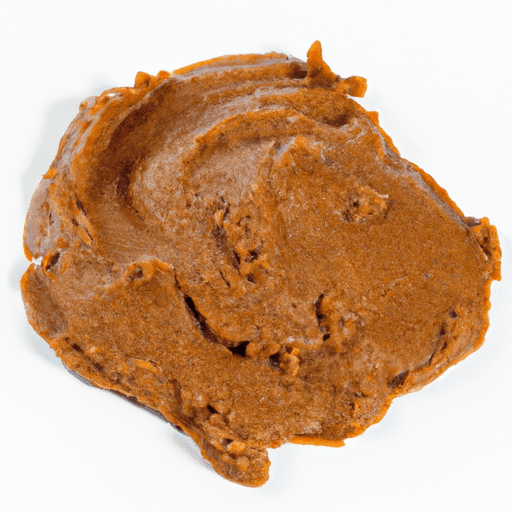The Magic of Seasoned Soy Bean Paste: A Guide to Umami Flavor
If you’re a lover of umami-rich flavors and enjoy exploring the depths of Asian cuisine, then seasoned soy bean paste should be on your radar. This humble yet powerful ingredient is a key player in many dishes, adding a burst of savory goodness that is hard to resist. In this post, we’ll delve into the world of seasoned soy bean paste, exploring its taste profile, common uses in cooking, nutritional value, and a few interesting historical tidbits.
Taste and Flavor Profile
Seasoned soy bean paste, also known as doenjang in Korean or miso in Japanese, is a complex and deeply flavorful ingredient. Its taste can be described as a combination of savory, earthy, and slightly sweet notes. The enchanting aroma that arises when it hits the heat is enough to make your taste buds dance with anticipation.
Common Uses in Cooking
Seasoned soy bean paste is an incredibly versatile ingredient with a wide range of uses. In Korean cuisine, it forms the backbone of iconic dishes such as doenjang jjigae (soy bean paste stew), ssamjang (dipping sauce), and bibimbap (mixed rice bowl). The Japanese utilize miso in classics like miso soup, as a base for marinades and glazes, and even in sweet treats like miso caramel.
Apart from its starring role in specific recipes, seasoned soy bean paste is also a fantastic way to add depth and richness to various dishes. It acts as an umami bomb that intensifies the flavors in stir-fries, soups, sauces, and dressings. Its versatility extends to vegetarian and vegan cooking, making it a viable alternative for enhancing meat-free dishes.
Nutritional Value and Health Benefits
Seasoned soy bean paste not only tantalizes our taste buds but also boasts an impressive nutritional profile. It is a rich source of protein, containing all essential amino acids, making it a valuable addition to plant-based and vegetarian diets. Additionally, it is packed with vitamins and minerals such as vitamin K, vitamin B12, and manganese.
The fermentation process involved in producing seasoned soy bean paste provides additional health benefits. It promotes the growth of beneficial bacteria and aids in digestion, contributing to a healthy gut. The presence of probiotics in fermented foods has been linked to improved immune function and a reduced risk of certain chronic diseases.
History and Interesting Facts
Seasoned soy bean paste has a remarkable history spanning centuries. Its origins can be traced back to China, where it was first developed around the 3rd century BC. From there, it made its way to Korea and Japan, where it gained immense popularity and cultural significance.
Traditionally, making seasoned soy bean paste was a labor-intensive process that involved fermenting soybeans, salt, and a koji culture. The fermentation period varied from months to years, resulting in different flavor profiles and intensities. It is fascinating to see how this ancient method of food preservation has stood the test of time and continues to be cherished and celebrated in modern cuisine.
Seasoned soy bean paste is undoubtedly a gem in the culinary world. Its deep umami flavor, versatility, and numerous health benefits make it an indispensable ingredient in Korean, Japanese, and beyond. Whether you’re looking to create traditional dishes or add a flavor punch to your own culinary creation, seasoned soy bean paste is a magical ingredient that will take your cooking to new heights. Give it a try, and let your taste buds experience the wonder of umami.
Seasoned Soy Bean Paste
Origin: Seasoned soybean paste, also known as doenjang, is a traditional fermented soybean paste widely used in Korean cuisine. Its origin dates back to ancient times in Korea, where fermenting soybeans became an important preservation method.
Common Uses: Seasoned soybean paste is a staple ingredient in Korean cooking. It is used as a base for many traditional dishes, such as soups, stews, and sauces. It imparts a rich, savory flavor to dishes while adding depth and complexity.
Nutritional Benefits: Seasoned soybean paste is highly nutritious. It is an excellent source of protein and contains essential amino acids. Additionally, it is rich in vitamins and minerals, including vitamin B, iron, and calcium. The fermentation process also enhances the digestibility of the soybeans.
Unique Properties: The unique characteristic of seasoned soybean paste lies in its fermentation process. The paste is traditionally fermented in large earthenware pots, allowing the natural enzymes and beneficial bacteria to develop. This fermentation imparts a unique umami flavor and deepens the taste profile of the soybean paste.
Historical Significance: Seasoned soybean paste has a long history in Korean food culture. It has been a vital part of Korean cuisine for centuries, and its production techniques have been passed down through generations. It is considered an essential ingredient for a well-balanced flavor in Korean dishes, showcasing the country’s rich culinary heritage.




Use the share button below if you liked it.
It makes me smile, when I see it.